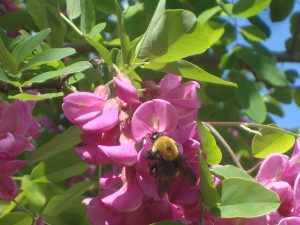Home used to be a small farm nestled beside a river out in the countryside. During the winter home was the smell of wood on the fire in the house, and during the summer home was the smell of horses and hay outside. Home was the beautiful view of the river and the mountains from our backyard. Home was the feeling of a warm horse beneath me when I was riding bareback. Home was the numb tingly feeling that you get in your fingers when carrying out water pails to the horses in the middle of December. Home was the sound of frogs in the backyard on a summer night. And it was also the sound of hungry horses neighing because they want to be fed in the morning. Home was the taste of burned marshmallows in the summer and hot chocolate in the winter. For my childhood this was home, but due to unforeseen circumstances I was forced to grow up and leave this place that I called home.
My next home was in a small town, this home was very different from my first home and it took a while to get used to. Back on the farm there were beautiful green mountains with tall trees that were the homes of squirrels. In this new home the mountains are all brown decorated with cactus and sagebrush which were the homes of rattlesnakes. Back on the farm it was just the four of us my Mom, Dad, little sister, and myself. But now this new home is really busy and loud filled with aunts, uncles, cousins, grandparents, and friends all coming over to say goodbye. This home is the place where I also had to say goodbye to my Dad as in this home he passed away from cancer. Our family of four soon became a family of three the house went quiet. This home although filled with painful memories is still a home that I love as it is also filled with happy memories too. One memory I have is sitting outside with my father in the backyard watching big fluffy bumble bees pollinate the pink flowers in the tree. This was also the home where I became closer to my mom and sister. It is the home where we three girls united together and planned vacations to Hawaii, bought a hot tub, held parties, and watched TV in bed together. My relationship I have with my mother and little sister grew a lot in this home. But soon I grew out of this home. I got bored of going to the same restaurants, and shopping at the one mall that we had in this little town. And I just did not picture myself going to one university we had in town. I knew that if I went to this university I would be going to school with all the people I went to highschool with I was no longer a teenager I was becoming an adult and therefore I moved out on my own.
The home that I live in now is in Vancouver. For me Vancouver is a place of independence, freedom, opportunity, and new experiences. Of course when I first moved here I often got homesick and yearned to be back in my little town but soon that changed. Vancouver is now my home as it is a place where am able to follow my dreams and passions. Here at my home I can study what I am passionate about as I am able to attend UBC which has “one of the leading Asian studies programs in Canada” (The department of Asian studies). I also am able to pursue my dream of becoming an English teacher and be able to choose from an abundance of different teaching jobs. I am also able to develop new hobbies as Vancouver gave me the opportunity to become an avid cold water scuba diver. The multiculturalism in Vancouver is another reason why I call it home as I am able to meet new people, try new food, and practice speaking new languages. And now when I go back to my small hometown, I feel homesick and cannot wait to get back to Vancouver.
Overall when I am told to write a short story that describes my home I cannot help but write about a bunch of different places. For me I had a different place that I called home for each stage of my life. These places all hold a special place in my heart and I could not say that I loved one more than another.

Commentary
Before writing this story I did a little bit of research to look into how to write captivating descriptive passages. I learned that it is good to use all of the human senses (Anders) and this is what I tried to do for most of my story.
Citations
Anders, Charlie Jane. “How to Write Descriptive Passages Without Boring the Reader or Yourself.” io9, io9, 16 Dec. 2015, io9.gizmodo.com/how-to-write-descriptive-passages-without-boring-the-re-1479764153.
Andresen, Brendan. “Scuba Diving Club Vancouver Courses Lessons Training.” UBC Aqua Society, diveubc.com/.
“The Department of Asian Studies: University of British Columbia.” Department of Asian Studies, asia.ubc.ca/.

